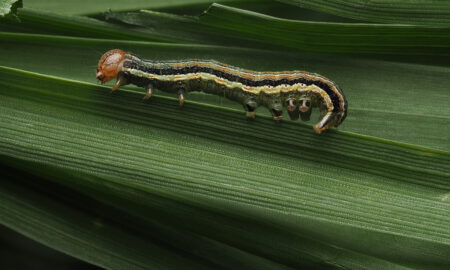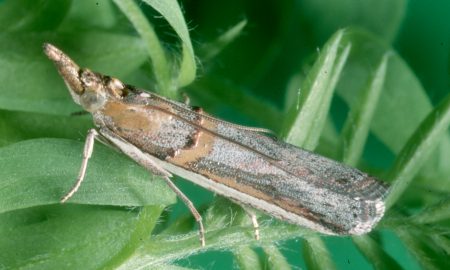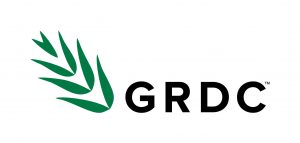Key takeaway: The Beneficials Chemical Toxicity Table has been updated to now include honey bee data, making it easier for growers and advisers to compare products based on their toxicity to beneficial insects. Use this practical tool to help reduce pest pressure naturally and protect crop productivity.
What the Beneficials Chemical Toxicity Table does:
The Beneficials Chemical Toxicity Table is a trusted guide that many growers and advisors rely on to understand how different pesticides impact beneficial insects (and arthropods).
The table compiles international and Australian data on insecticide toxicity to beneficial insects relevant to broadacre crops. It’s colour-coded matrix makes it quick to see which active ingredients have low, medium, high, or very high toxicity to beneficials.
Best of all, it’s industry relevant, with ratings based on active ingredients and field rates in Australian broadacre crops.

What’s been updated:
In response to industry feedback, the table now includes toxicity information for honey bees, important pollinators that contribute to crop productivity.
Honey bees are tested under standardised guidelines set by the Organisation for Economic Co-operation and Development (OECD). The table includes only high-quality, OECD-compliant data, sourced from the UK’s Pesticide Properties Database, making it consistent and scientifically backed. This update makes it possible to choose pest control options that protect pollinators and beneficials, whilst maintaining effective crop protection. It’s a quick, easy tool that works for busy decision-makers.
How to read the table:
Honey bees: The new bee ratings are based on a chemical’s median lethal dose (LD₅₀), the amount of chemical that kills 50% of the honey bee population tested.

- If it takes a large amount of the chemical to kill 50% of the test bees (LD₅₀ >100 μg a.i./bee), then the chemical is considered low toxicity and indicated by a green bee icon. Best practices for bee protection still apply.
- If it takes a medium amount (LD₅₀ = 1-100 μg a.i./bee), the chemical is considered to have a moderate toxicity to bees, indicated by a yellow bee icon. This means caution is needed when used.
- If it takes a very small amount (LD₅₀ <1 μg a.i./bee), the chemical is highly toxic, indicated with a red bee icon. Even trace amounts can be dangerous, so these chemicals pose a high risk to bee health.
LD₅₀ = median lethal dose, μg = microgram a.i. = active ingredient
These ratings are like the UV index forecast: it gives you a general level of sun intensity and risk (inherent toxicity), but whether you get sunburned depends on how long you’re in the sun and if you use sunscreen (how much chemical is applied and exposure factors). It’s an indicator of potential harm, not a certainty.
For guidance on how to minimise the impact of pesticides on honey bees, visit BeeAware.
Beneficials (predators and parasitoids): The ratings in the bulk of the table reflect pesticide impact on beneficial insects at doses based on field rates, offering a practical guide to chemical selectivity. However, because data comes from lab studies, field effects may vary, particularly with repeated chemical use.

- Green = low toxicity = <30% mortality
- Yellow = medium toxicity = 30% – 79% mortality
- Orange = high toxicity = 80% – 99% mortality
- Red = very high toxicity = >99% mortality
Updated table is now live
With spring on the horizon, both pest pressure and beneficial insect and pollinator activity are set to ramp up.
Use the updated Beneficials Chemical Toxicity Table to choose products that target pests while minimising harm to the allies in your paddock. The right spray decisions now means fewer problems later.
Download the table here, and make your next spray decision with beneficials and pollinators in mind.
Cover image: Photo by Lilia Jenkins





